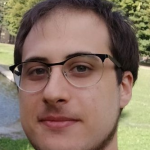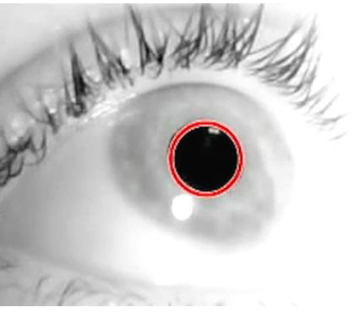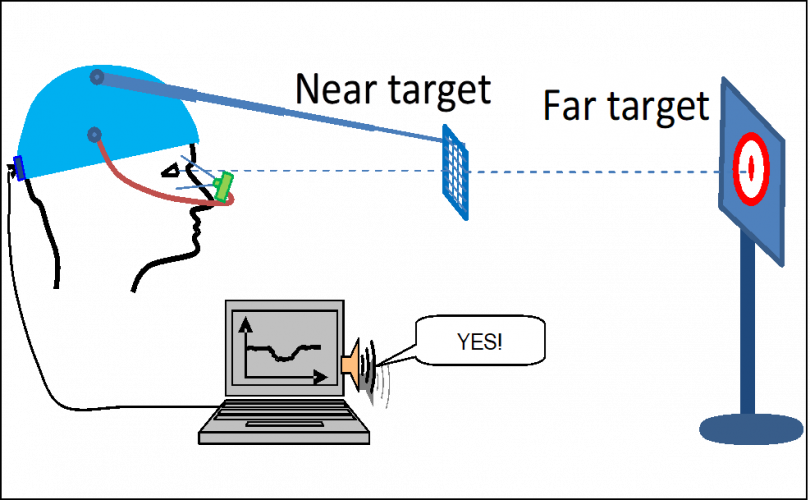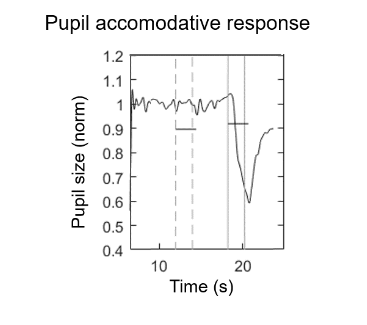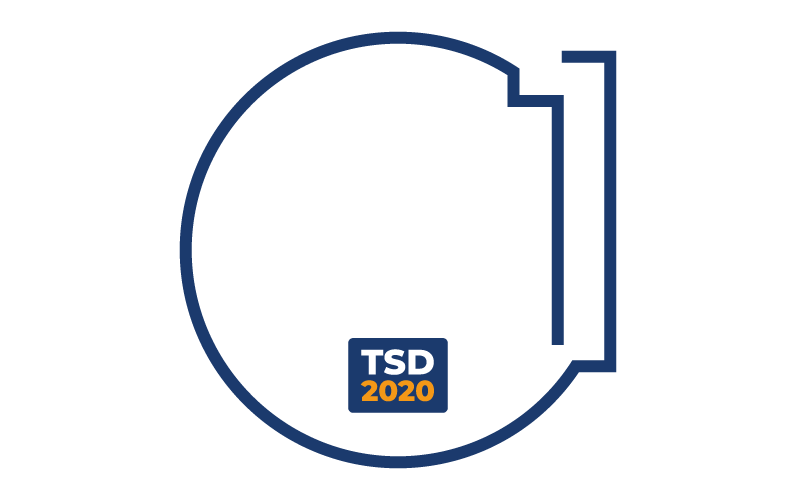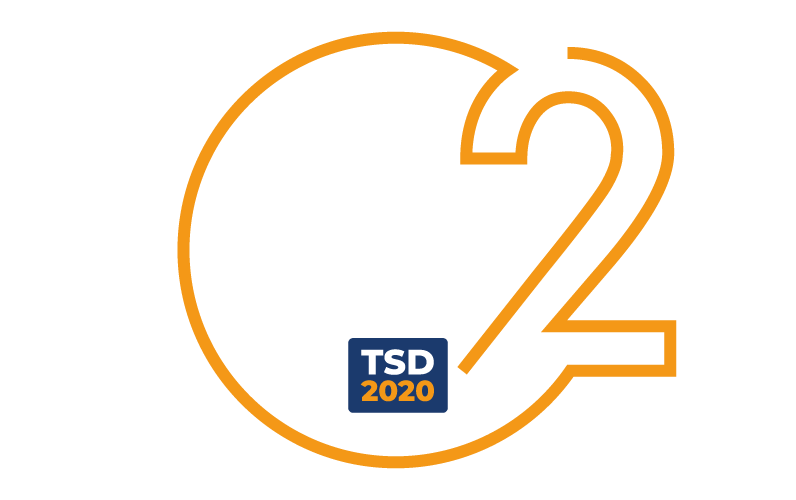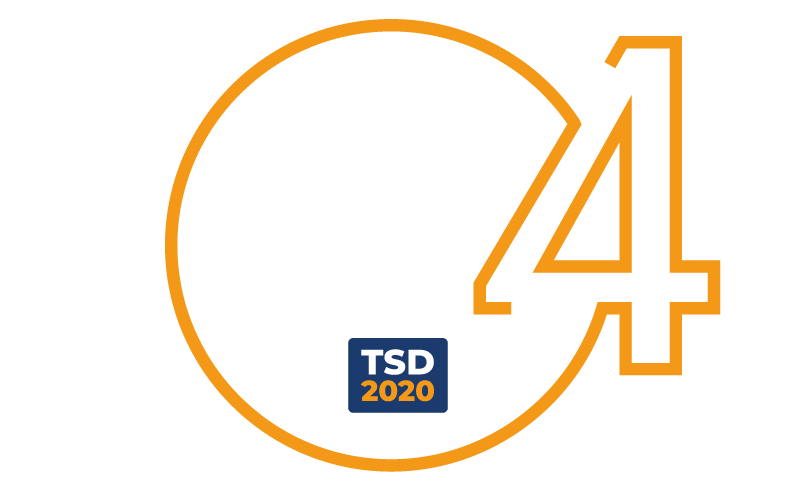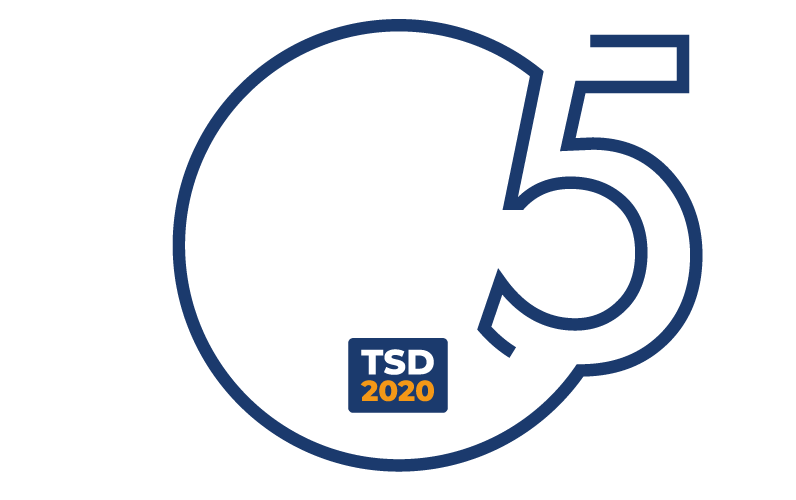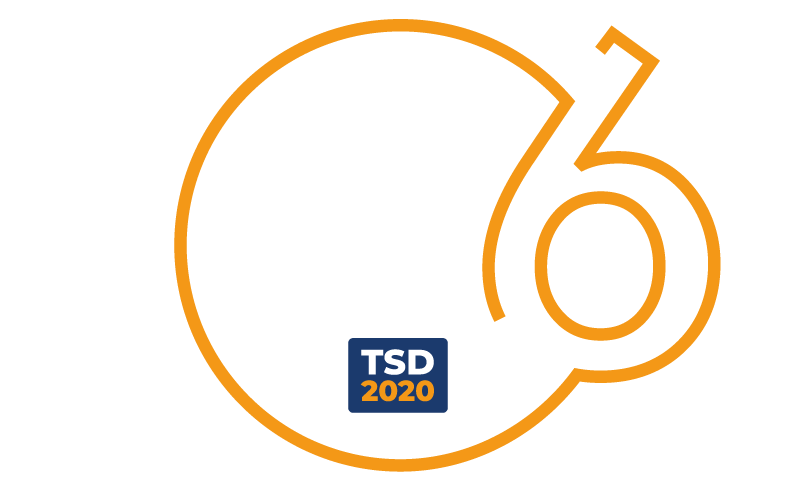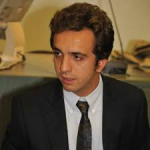The present solution is intrinsically simple: when voluntary switching the focus from a far to a near visual target the pupil undergoes a marked and robust constriction, which can be easily detected and used to establish a binary communication (e.g. to answer Yes/No to a given question).
On this basis Alternative and Augmentative Communication (AAC) devices can be devised in which the binary information may be used to drive more complex visual/audio interfaces, including spellers.
In particular the possibility to detect the pupil size may be implemented as an additional feature to existing AAC devices based on eye-tracking.
Different device arrangements are possible: 1) the pupil can be monitored by an eye-glasses-mounted micro camera or by a remote camera; the visual targets may be objects already present in the room (previously aligned with the gaze of the dominant eye); the pupil constriction detected by a processing unit may be used to operate a multiple selection over a displayed scanning interface or to vocalize a Yes/No answer.
